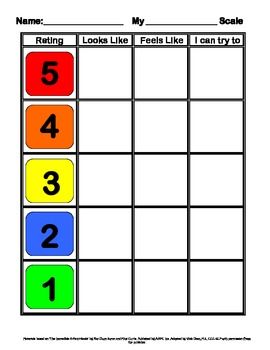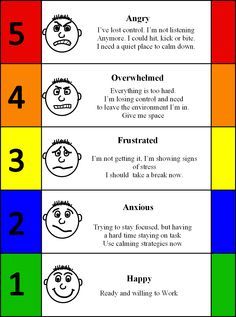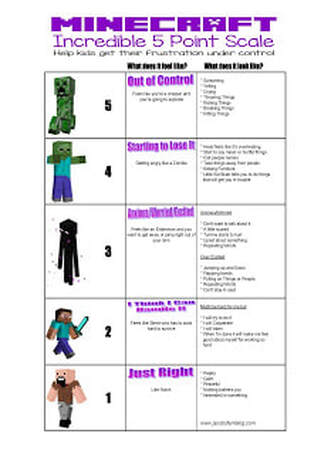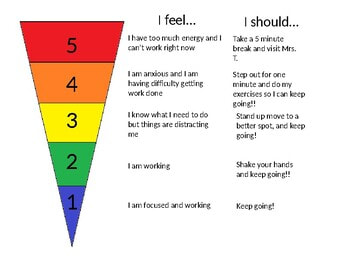No one likes change. Underdeveloped or immature thinking styles or abilities make change and learning new concepts very difficult. Keep it simple. Move lessons from ‘simple’ to more ‘complex’, with success and rehearsal time built in. Many people have difficulty ‘generalizing’ from one setting to another. Difficulty relating to ‘past’ or ‘future’ events, or how they may be connected.
Be prepared to answer your child’s questions. For example:
- What’s in it for me?
- How come “sister” doesn’t have to do it?
- Who made these rules?
- Why can’t I do what I want to do?
- Where did (cause of change) come from?
- When will this be over?
Don’t make promises you can’t keep. Try to link it to a familiar character or character’s saying. You are giving them a ‘strength’ or helpful ‘skill’ which you may choose to call their ’superpower’. New skills requiring ‘change’ need to be directly taught.
INTRODUCTION FOR USE OF THE 1-5 SCALE:
a. Teach the skill (Choose a skill/behavior/concept to be learned.)
b. Model the skill (Decide on the content & levels to be acknowledged/aware of.)
c. Practice in role play (Tryout the new skills/tasks/understanding.)
The behavioral support known as the Incredible 5-Point Scale, created by Kari Dunn Buron and Mitzi Curtis (2003), provides a visual representation of social behaviors, emotions, and abstract ideas. It is a simple scale used to teach social understanding.
< My Thoughts > “ Incredible 5-Point Scale”
Create the scale to fit your need. What is the desired outcome? In the first visual example here, you can create a card with your child’s favorite characters or sayings. The next card was developed for a child with anger control problems. The third card has a pennant-shaped scale with ‘I feel’ (Identifying feeling of escalation and/or loss of control.) and ‘I should’ (An appropriate action to take).
Much depends on the level of your child’s understanding going into the presentation. What experience or situation do they have to tie it to or hook it on to? The scale can be a visual rule poster/card. Never assume they already know necessary steps to the concept. Have them repeat what they ‘think’ it is you want them to do. Then allow time to ‘review’, ‘revise’, & reteach’ for a better understanding.
Know that any behavior change or startling new awareness could result in an ‘extinction burst’. This is a sign that they may NOT really want to accept the ‘change’ but they recognizing the need to do so. This is when patience and calm is required while your child ‘powers through’ the change.





 RSS Feed
RSS Feed